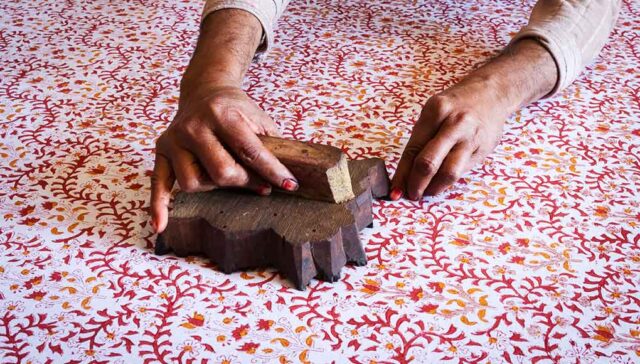Are you curious about what India is known for globally? Do you want to learn more about it beyond the popular Bollywood movies and spicy dishes? I’ve done a ton of research on this subject, so I’m here to help!
India is home to many interesting sights, culture, and cuisines. In this article, I will discuss 5 things India is known for globally – from spices to software. Together we’ll explore their unique food flavors like curry powder and garam masala; iconic monuments such as the Taj Mahal; yoga’s origin story in India; its growing tech industry; and how traditional crafts are still an integral part of life there. By the end of this article, you will have gained enough knowledge to know why people all over the world recognize and appreciate Indian culture. So let’s dive right in and learn more about these fascinating topics!
1. The Flavors of Indian Cuisine
One of the most iconic dishes in Indian cuisine is biryani. This flavorful and aromatic rice dish is a true masterpiece that combines long-grain basmati rice with succulent pieces of meat or vegetables, fragrant spices like cardamom and saffron, and caramelized onions for added depth of flavor. The result is a dish that bursts with layers of complexity, where every spoonful tells a unique tale.
Another popular dish in Indian cuisine is butter chicken. This creamy and indulgent curry features tender pieces of chicken cooked in a rich tomato-based gravy made with butter, cream, and an array of spices such as fenugreek and garam masala. The flavors meld together beautifully to create a harmonious balance between tanginess from the tomatoes, richness from the cream, and warmth from the spices.
The diversity within Indian cuisine is truly remarkable. From North India’s hearty kebabs to South India’s coconut-laden curries, there are countless regional specialties waiting to be explored. Each state boasts its own unique flavors and cooking techniques that have been perfected over generations.
Indian desserts also deserve a special mention for their sheer decadence. Whether it’s gulab jamun – soft fried dough balls soaked in sugar syrup – or rasgulla – spongy cottage cheese dumplings dipped in sweetened milk – these sweets are guaranteed to satisfy even the most insatiable sweet tooth.
In conclusion, Indian cuisine offers an unforgettable culinary journey filled with bold flavors, diverse dishes, and irresistible sweets. Exploring this vibrant world of food will undoubtedly leave you craving more delicious bites from this incredible culture.
2. Iconic Monuments: The Taj Mahal
The Taj Mahal was built in the 17th century by Emperor Shah Jahan as a tribute to his beloved wife, Mumtaz Mahal. The amount of detail and craftsmanship that went into constructing this magnificent structure is simply awe-inspiring. From its intricately carved marble façade to its perfectly symmetrical design, every aspect of the Taj Mahal exudes elegance and grandeur.
As you approach the Taj Mahal, it looms majestically before you, gleaming in the sunlight. The white marble seems to glow from within, giving the whole monument an ethereal quality. As you step through the ornate entrance gate and enter into its serene gardens, you can’t help but be overwhelmed by a sense of peace and tranquility.
Inside the mausoleum itself lies the tomb of Mumtaz Mahal, adorned with elaborate floral motifs inlaid with semi-precious stones. The play of light on these intricate designs creates an otherworldly atmosphere inside the chamber. It’s impossible not to feel a deep sense of reverence and admiration for such masterful artistry.
Each year, millions flock to witness this architectural marvel firsthand and are left awestruck by its sheer beauty. To stand in front of this iconic symbol of love is truly humbling; it serves as a reminder that even in our modern world filled with skyscrapers and technology, there is still room for timeless beauty crafted by human hands.
So if you ever find yourself planning a trip to India or looking for something truly remarkable to experience firsthand, make sure not to miss out on visiting this breathtaking wonder – because no visit would be complete without witnessing the splendor that is the Taj Mahal!
- Its architectural beauty
- Its romantic history
- Symmetry
- Mausoleum dedication
- Tomb’s adornment
- Sense of peace and tranquility
- Masterful artistry
- Millions of visitors annually
- Iconic symbol of love
Like what you are reading on 5 Things India? Check out some more interesting articles about India.5 must-see places in India
3. Origins of Yoga
Yoga goes beyond the realm of traditional exercise, focusing on a holistic approach to well-being. The physical aspect of yoga helps improve flexibility, strength, and posture. With each pose, the body is gently stretched and strengthened, promoting overall health and vitality.
But yoga is not just about contorting your body into different shapes; it also teaches mindfulness and breath control. As you flow through poses, you are encouraged to stay present in the moment and pay attention to your breathing. This practice cultivates self-awareness and helps quiet the mind from distractions.
Meditation plays a crucial role in yoga as well. By sitting quietly and observing our thoughts without judgment, we can develop clarity and find inner peace amidst life’s chaos. Meditation allows us to tap into our inner wisdom and connect with something greater than ourselves.
Lastly, yoga offers a path towards spiritual enlightenment. It provides an opportunity for individuals to explore their own beliefs or discover new ones. Through self-reflection and introspection during practice, one may uncover deep truths about themselves or gain insight into the nature of existence.
In conclusion, yoga is much more than mere physical exercise; it is a transformative practice that nurtures both body and soul. Its incorporation of mindfulness, breath control, meditation, and spirituality sets it apart from other forms of fitness activities. Whether you’re seeking increased flexibility or inner peace – or both – practicing yoga can bring about profound positive changes in your life.
4. Thriving Tech Industry
India has emerged as a global leader in software development and information technology services over the past few decades. With its skilled workforce and significant contributions to innovation, many multinational companies have set up their operations in cities like Bangalore (known as “India’s Silicon Valley”). From coding to data analytics, Indian professionals play a vital role in shaping digital advancements worldwide.
5. Traditional Crafts & Artistry
One such craft form is the art of block printing, which has been practiced for centuries in places like Sanganer and Bagru. Artisans meticulously carve intricate designs onto wooden blocks, and then dip them in natural dyes to create beautiful patterns on fabrics. The process requires immense skill and precision as each block needs to be perfectly aligned to ensure a flawless print. These vibrant textiles not only add color and beauty to our homes but also provide livelihoods for thousands of artisans.
Another ancient craft that continues to flourish is pottery, particularly in towns like Khurja and Moradabad. Skilled potters expertly shape clay into various forms, from delicate vases to sturdy cookware. Each piece is then carefully hand-painted with unique designs using colors derived from natural pigments. The result is a collection of stunning ceramics that are both functional and aesthetically pleasing.
In addition to preserving cultural heritage, these crafts play an essential role in sustaining local economies by generating employment opportunities for countless individuals across India’s diverse regions. They also promote sustainable practices as many artisans use eco-friendly materials sourced locally.
It’s truly remarkable how these timeless crafts have stood the test of time amidst modernization. They serve as a reminder of India’s rich artistic traditions while embracing innovation and adaptation. By supporting these craftsmen, we not only bring home exquisite pieces but also contribute towards the preservation of Indian culture and economic growth
FAQs:
1. What cultural attractions does India offer that make it famous globally?
A. India is renowned for its rich cultural heritage, including historical landmarks like the Taj Mahal, vibrant festivals such as Diwali and Holi, and diverse traditional arts like classical Indian dance forms and music.
2. How has Bollywood contributed to India’s global recognition?
A. Bollywood, the Hindi film industry in India, has played a significant role in creating global awareness about Indian cinema. Known for its vibrant dance sequences and dramatic storytelling style, Bollywood movies have gained a massive international following.
3. Is yoga popular worldwide because of its origins in India?
A. Yes, yoga originated in ancient India and has gained immense popularity around the world due to its holistic approach to physical fitness and mental well-being. Many people practice yoga globally as a way to improve flexibility, reduce stress, and promote overall health.
4. Why is Indian cuisine celebrated worldwide?
A. Indian cuisine is known for its bold flavors, aromatic spices, and diverse regional dishes. The use of various herbs and spices creates unique taste profiles that have captivated palates worldwide. Additionally, vegetarian options within Indian cuisine cater to different dietary preferences.
5. In what ways has technology from India impacted the global market?
A. With a thriving IT industry known for software development services and entrepreneurial ventures such as startups offering innovative solutions across various sectors (e.g., healthcare or finance), technology products from India have had a considerable impact on the global market economy.









